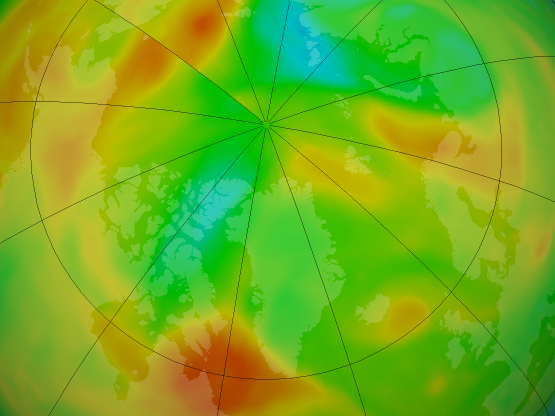This website uses cookies so that we can provide you with the best user experience possible. Cookie information is stored in your browser and performs functions such as recognising you when you return to our website and helping our team to understand which sections of the website you find most interesting and useful.

An “unprecedented” hole in the ozone layer which developed to become the largest ever seen over the Arctic has closed just weeks after opening, scientists observing the phenomenon have said.
The gap in the vital layer, which protects the Earth from harmful radiation from the sun, set a new record for ozone depletion in the northern hemisphere when it formed earlier this month.
The depleted area was roughly the size of Greenland, and stretched over the top of the polar icecap.
Late last week the Copernicus Atmosphere Monitoring Service (CAMS) announced the ozone in the affected area had recovered.
Though previous smaller holes have appeared in the ozone layer over the northern hemisphere before, scientists said it was the “first time you can speak about a real ozone hole in the Arctic”.
CAMS said the hole had been caused by unusual weather patterns over the Arctic.
Particularly cold temperatures and powerful winds formed a “polar vortex”, creating the frigid conditions which led to vast ozone depletion.
“Although it looks like the polar vortex has not quite come to an end yet and will reform in the next few days, ozone values will not go back to the very low levels seen earlier in April,” the organisation tweeted.
Asked by one respondent whether it was due to less pollution because of the lockdowns to prevent the spread of Covid-19, the organisation replied: “This Arctic ozone hole actually has nothing to do with coronavirus-related lockdowns, but rather was caused by an unusually strong and long-lived polar vortex.”
In an earlier article about the causes of the ozone depletion over the Arctic, the scientists said: “While we are used to ozone holes developing over the Antarctic every year during the Austral spring, the conditions needed for such strong ozone depletion are not normally found in the northern hemisphere.”
In Antarctica, the thickness of the ozone layer changes with the season. The freezing winters lead to high-altitude clouds combining with ozone-damaging chlorofluorocarbons (CFCs), that have been lingering in the atmosphere for decades, which together thin out the layer.
This depletion has been causing an ozone hole to form annually over Antarctica for the last 35 years. However, years after the ban on CFCs a slow recovery is underway – the 2019 Antarctic ozone hole was one of the smallest recorded since the crisis was first discovered.
The Arctic is different because the weather is typically warmer and therefore the same high-altitude clouds do not form.
The CAMS scientists added: “This ozone hole was basically a symptom of the larger problem of ozone depletion, and closed because of local annual cycles, not long-term healing. But, there’s hope: the ozone layer is also healing, but slowly.”



 Africana55 Radio
Africana55 Radio 

